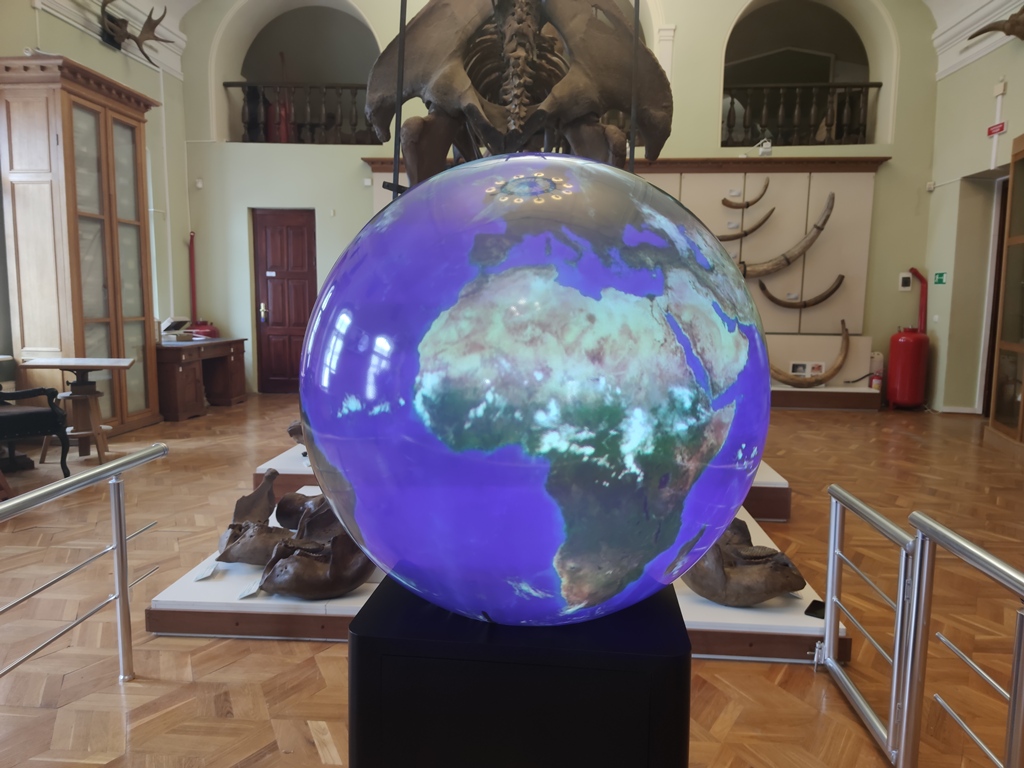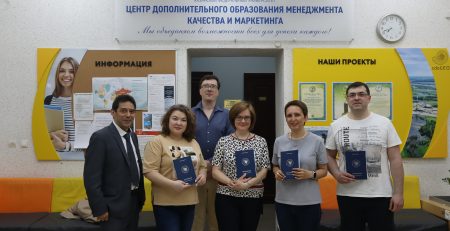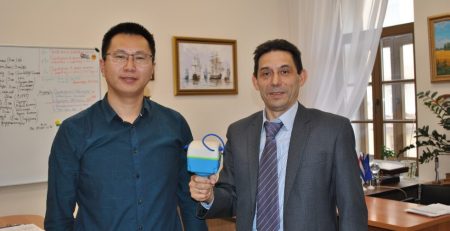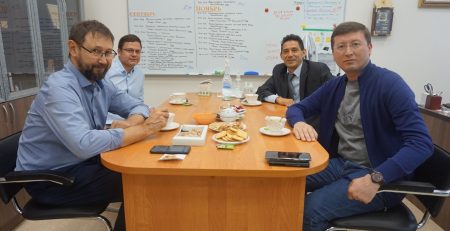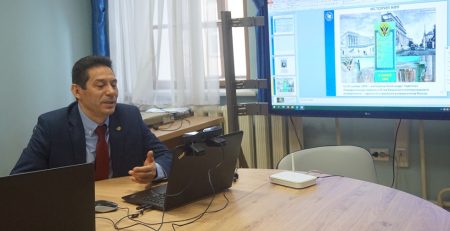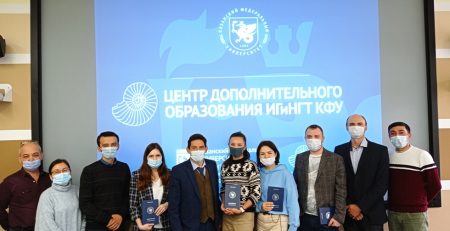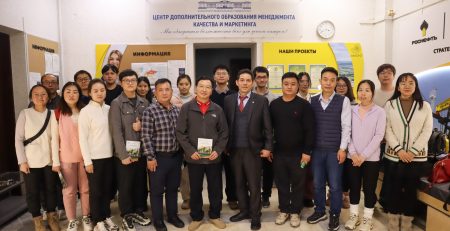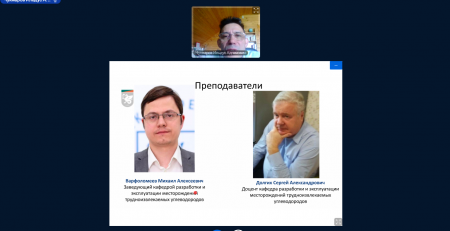A multimedia globe is installed in the Geological Museum of KFU
The Stukenberg Geological Museum of Kazan Federal University has a new unique exhibit - a multimedia globe, which allows demonstrating all geodynamic processes and physical fields of the Earth.
A multimedia projection complex with a spherical screen located in the Mammoth Hall can show a large amount of data on the Earth sciences: the planet itself, cyclone formation processes, extreme events (earthquakes, hurricanes, volcanic eruptions), the boundaries of lithospheric plates, formation and movement of continents and much more. The data can be visualized both for real time and for past periods. Visitors to the museum, which is located in the Institute of Geology and Petroleum Technologies of the Kazan Federal University, will be able to use an interactive touch screen to control the sphere, rotate it, slow down and accelerate processes.
The digital globe was brought from the Geophysical Center of the Russian Academy of Sciences, where it was created. The Geophysical Center of RAS develops software for visualizing Earth sciences data. These technologies are widely used around the world in various museums and universities for educational and scientific purposes. The Geophysical Center of the Russian Academy of Sciences decided to implement such a project in Russia using its own software, which surpasses existing analogues in many respects, since it was created at an academic institute, and therefore adapted for solving research problems.
“Our project allows visualization of GIS data in real time. Our main interest is, of course, data and database development. We pay special attention to the popularization of earth sciences among preschoolers, schoolchildren and students. We also select the most optimal among all existing technical solutions in the world and create a demonstration complex that will meet the most advanced technologies in this area. Recently, we have come across a lot of different material on the popularization of earth sciences, which often do not correspond to reality and real scientific research. We focus on modern research in this area,” said Alena Rybkina, Deputy Director for Development of the Geophysical Center of the Russian Academy of Sciences.
Director of the A.A. Stukenberg Geological Museum, Head of the Department of Paleontology and Stratigraphy of IGPT KFU Vladimir Silantyev noted that the multimedia globe is also of scientific interest: “This exhibit becomes central not only in the hall in which it is installed, but in the entire museum. Because it allows not only to visualize the processes that are happening now, but also to study them in the past, which makes it possible to predict many of them in the future. And most importantly, the software product is open source and can be modified. I think that the “GIS-club”of IGPT can take it under its care to create new developments, which the software developers will only be glad to see.”
The multimedia globe of Kazan Federal University became the third in Russia. The first two multimedia globes are installed in the Geophysical Center of the Russian Academy of Sciences and in the Museum of the Earth of the Novosibirsk State University.
“We have been friends with the Kazan Federal University for a long time. We have a lot of joint work, including in the field of studying the Earth’s magnetic field, which can also be studied with the help of the new exhibit. Therefore, Kazan University has become one of the owners of the unique globe,” added Alyona Rybkina.
Multimedia globes are also installed in the Science Museum of Chicago, the Natural History Museum in London, the Hong Kong Space Museum and other prestigious museums.

